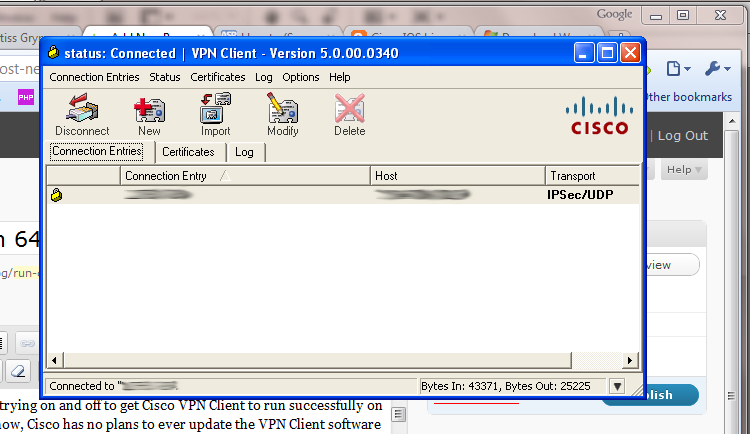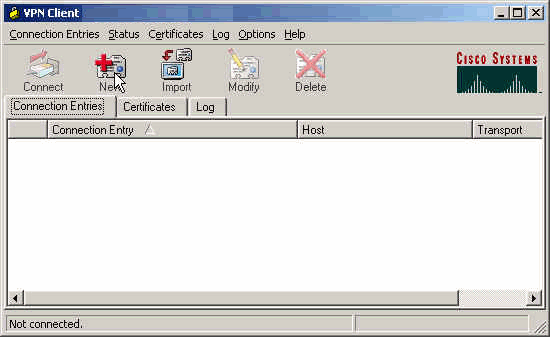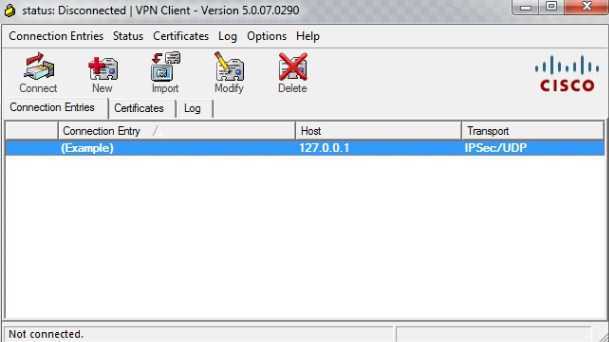
- #Free vpn client to connect to cisco asa using windows 7 password
- #Free vpn client to connect to cisco asa using windows 7 Pc
- #Free vpn client to connect to cisco asa using windows 7 windows 7
- #Free vpn client to connect to cisco asa using windows 7 windows
8.8.8.8 - the DNS Server associated with the Wifi Adapter (packet C69).In orange, we can see four separate DNS queries that are trying to be made by Windows/Chrome: The destinations of the four DNS queries are as follows: Packets starting with "A" are from the SA.
#Free vpn client to connect to cisco asa using windows 7 windows
Packets with IDs starting with "C" are from the Windows lient. Here are the resulting packet captures adjusted to sync their clocks and merged together. To do so, I pressed enter on in Google Chrome. With the packet captures running, I initiated DNS resolution on the client.

I set up a simultaneous packet capture on both the VPN-connected Windows client and the ASA to which that client is connected. So much that I decided to gather some evidence and see where it points. There is a lot of conflicting information about what actually happens on a Windows client when using split-dns. So, if Windows opts to send DNS queries for internal domains to adapters other than the VPN adapter, how can the VPN client ensure all DNS queries for internal domains are tunneled to the internal DNS servers? Am I missing something here? Is there something fancy going on that somehow allows the VPN client to intercept DNS queries that Windows sends to the wrong adapter? If so, how, exactly, does that work? Furthermore, it seems that Windows might even choose to send a DNS query for an internal domain to the physical adapter which only has public DNS servers associated with it. In fact, Windows will attempt the same DNS query on a different adapter if it doesn't receive a response from the first one within one second. The method that Windows uses to decide which network adapter and DNS server to use cannot by itself enforce that all internal DNS queries are sent to the the VPN adapter and that all public DNS queries are sent to the physical adapter. When you establish a remote access VPN connection using a Windows machine, the VPN connection shows itself as a separate network adapter (at least for the Cisco clients I have experience with).

For Cisco ASA, the operative command that claims to achieve this is split-dns.
#Free vpn client to connect to cisco asa using windows 7 Pc

Click "Advanced Settings" button and enter the preshared key. Choose "L2TP/IPSec" from "Type of VPN" pulldown and only check "MS-CHAP v2" protocol. Right click the VPN connection you just created and choose "Properties". Go back to the "Network and Sharing Center" and click "Change adaptor settings" in the left side. Close the "Connect to Workplace" window h.
#Free vpn client to connect to cisco asa using windows 7 password
Enter the firewall username and password and click "Create" button g. Enter your Cisco ASA5500 firewall IP address f. Setup a new network connection and choose "Connect to a workplace" d.

#Free vpn client to connect to cisco asa using windows 7 windows 7
Please follow these steps to configure Windows LP2T/IPsec client for Cisco VPN if you have Windows 7 or Vista Operating System. Step By Step Guide To Setup Windows 7/Vista VPN Client to Remote Access Cisco ASA5500 Firewall


 0 kommentar(er)
0 kommentar(er)
